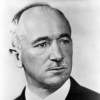
Under the Beneš Decrees, Hungarians in Czechoslovakia were stripped of their citizenship, Hungarian schools were closed, and approximately 44,000 Hungarians were forcibly resettled in the Czech Republic to replace displaced Germans, who were relocated to Germany. The resettlement process was marked by extreme inhumanity, with residents forced to leave their homeland suddenly, traveling in crowded cattle wagons under deplorable conditions, and many not surviving the journey. In response to these harsh measures, Hungary sought to alleviate the situation through a population exchange agreement.
This entailed the exchange of Hungarian and Slovak residents between Czechoslovakia and Hungary. However, the execution of the plan deviated from its intended outcome. While 90,000 Hungarians were resettled in Hungary, only 70,000 Slovak residents migrated in exchange. Additionally, Hungary offered voluntary relocation to Czechoslovakia, while Hungarians in Czechoslovakia were forcibly resettled against their will.
Subsequently, the Czechoslovak state pursued a policy aimed at reducing the Hungarian population and promoting Slovakization, termed "reslovakization." However, this policy only applied to individuals who had Slovak ancestry. The rationale presented was that Hungarians, primarily Hungarianized during the Austro-Hungarian Monarchy, should now be "slovakized." This strategy proved somewhat successful, with approximately 300,000 Hungarians falsely declaring themselves as Slovaks to regain citizenship and avoid deportation.
The restoration of citizenship, cessation of resettlement, reopening of Hungarian schools, and improvement in the situation of Hungarians occurred in 1948, coinciding with the communist takeover.

